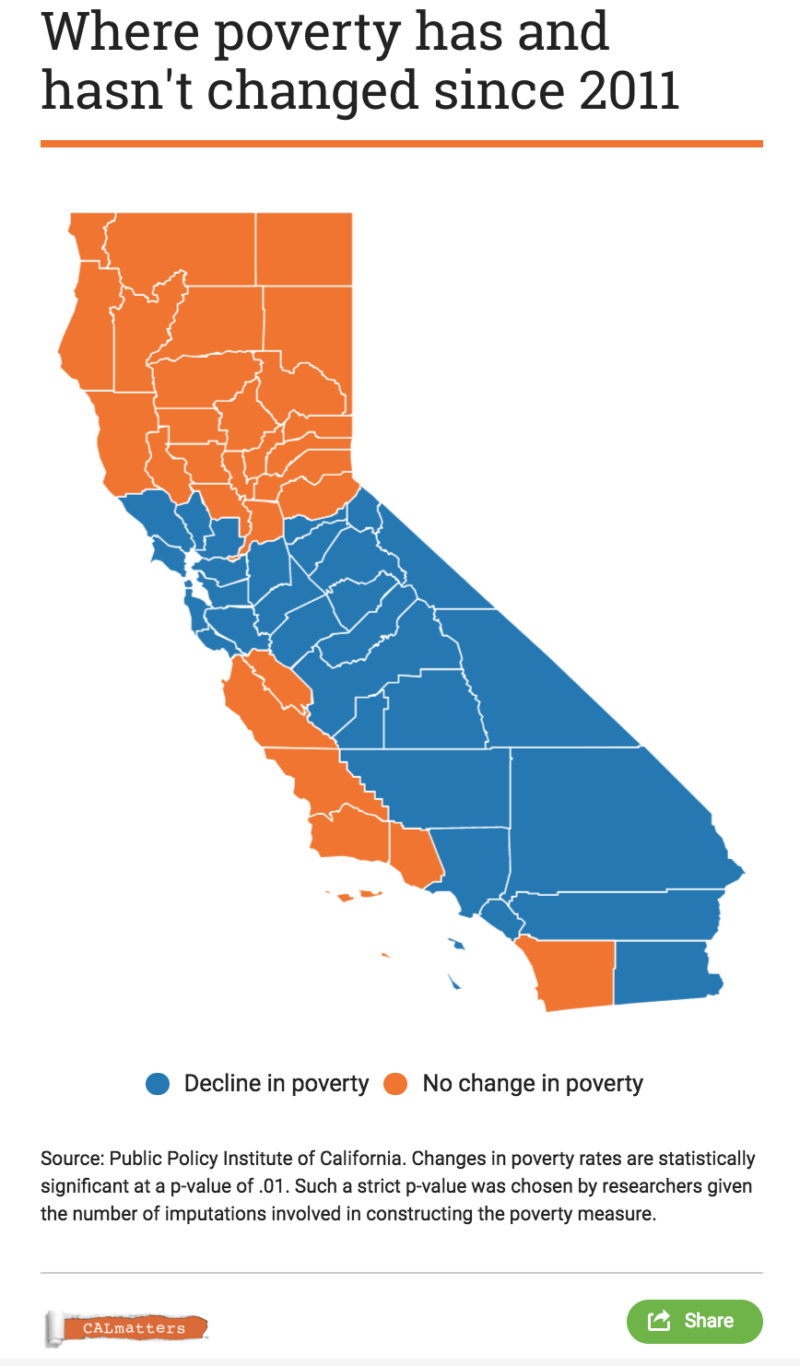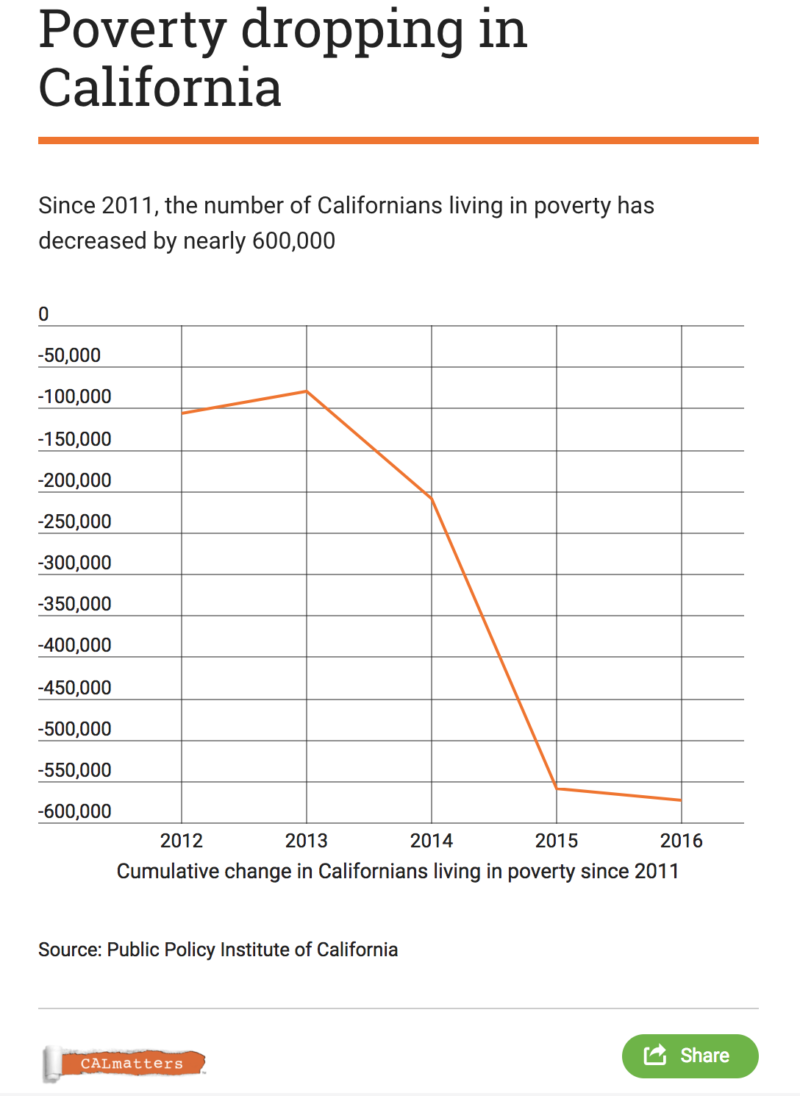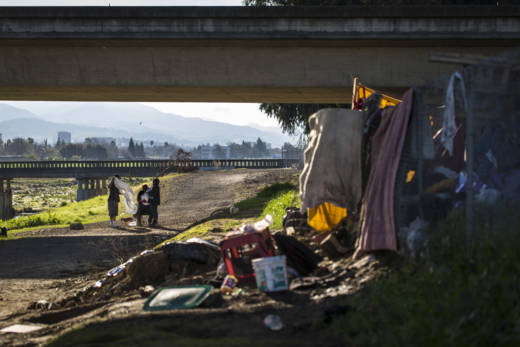That may not sound like much of a decline. But the sheer size of California means any movement in the poverty rate is going to affect a huge number of people. And poverty rates don’t see a lot of movement year-to-year anyway.
“Small changes in the poverty rate can be pretty meaningful,” said Sarah Bohn, research director at the Public Policy Institute of California. “Even like half of a percentage point can be really powerful in terms of the number of people who are poor.”
That’s the good news. But the decline in California’s overall poverty rate masks considerable geographic differences within the state. Some major swaths of California haven’t seen any decline in poverty at all.
San Diego County has not seen a statistically significant change in its poverty rate since 2011. About 1 in 5 residents of the county struggle to make ends meet, according to the institute’s poverty measure, which unlike the federal poverty metric takes into account housing costs and the benefits of government social programs. Out of the nine geographic regions the institute carves the state into for its analysis, the San Diego region is the second poorest, trailing only Los Angeles County.
The greater Sacramento area has similarly seen no real movement in its poverty rate since the early years of the decade. Of regions analyzed, only Sacramento and its neighboring counties saw an increase in the number of people living below the poverty line due to population growth, not an increase in the poverty rate.
Why have these areas lagged other parts of the state in reducing poverty?
Researchers don’t fully know yet. Part of the explanation is simply methodological—a large margin of error on these estimates minimizes year-over-year changes.
But another reason could be how the Great Recession of the late 2000s impacted different parts of the state. Bohn says that San Diego wasn’t hit as hard as other regions by the economic downturn, which ironically meant that an economic recovery wouldn’t lift local families as much.
Compare that to the Central Valley, which was ravaged by the foreclosure crisis. Over 100,000 fewer Central Valley residents are living in poverty now than in 2011. The only other region to see an equivalent drop over the same period was Los Angeles County, which is much larger.
The poverty improvements in certain areas could be obscuring a broader trend: Low-income Californians leaving the state entirely. A recent report by Beacon Economics found that the state lost more than 500,000 households making less than $50,000 a year since 2000.




